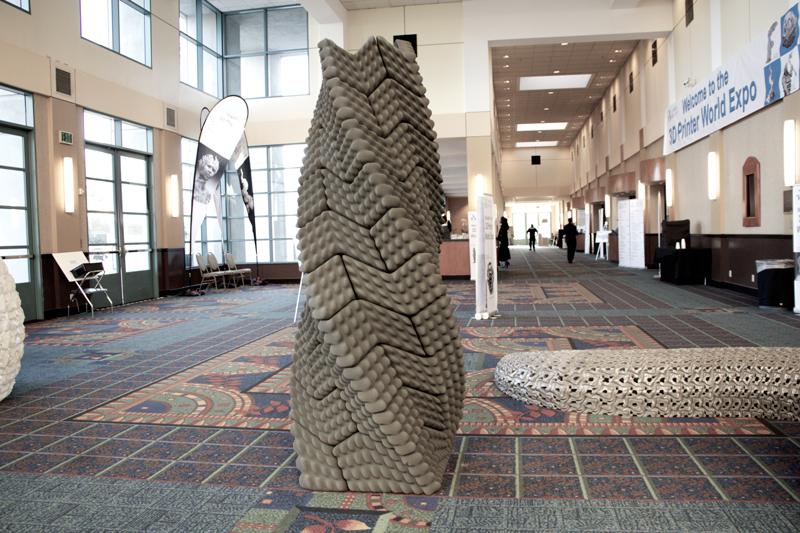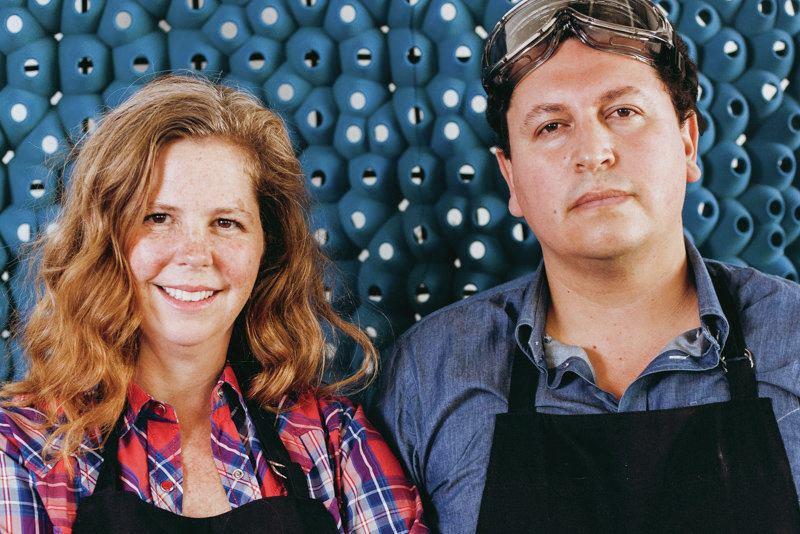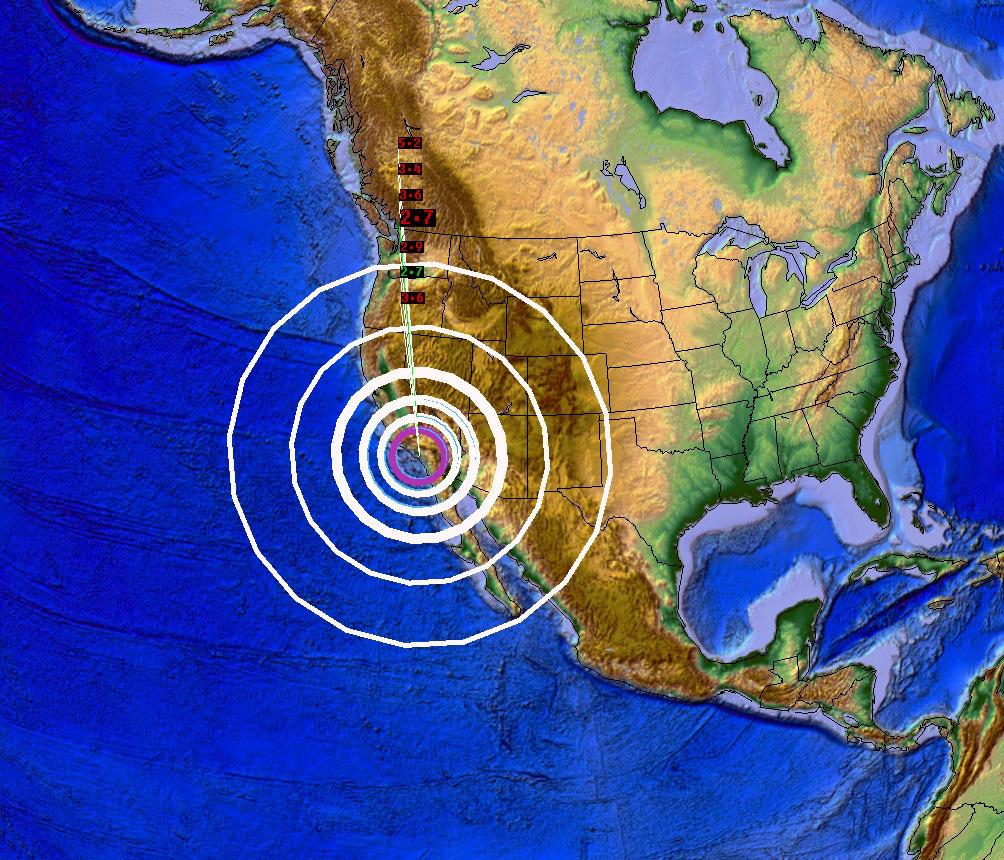Earthquakes may be common in California, but they have led to the inspiration of a very uncommon and unique 3D-printed structure, courtesy of Emerging Objects, a subsidiary of Oakland, CA based studio Rael San Fratello, the creation of Ronald Rael and Virginia San Fratello, a husband and wife architectural and design team.
Quake Column, created by Emerging Objects, is a 3D-printed design based on Incan techniques used to create seismically resistant structures, certainly an appropriate task for a company based in California, where they have probably already had several minor earthquakes this week–not even newsworthy to a Californian. A seismic event, known quite simply as an earthquake, happens when two blocks of the earth suddenly slip past one another, causing a sudden and violent shaking of the ground, which can sometimes lead to great destruction. Considering the amount of damage earthquakes can do to the landscape and real estate, these natural occurrences would be of logical interest to architects, as well as those exploring how ancient cultures warded off possible ruin to their structures in earthquake-prone areas.
Emerging Objects has produced a structure with interlocking pieces, inspired by the architecture of the Incas, using ashlar technique. Like California, Peru is ‘highly seismic,’ and the Incas had their architecture fine-tuned to work with seismic events rather than against, eschewing mortar and instead creating dry stone walls with interlocking pieces, inclining inwards by 3° to 5°, with rounded corners. These stones were massive and heavy. Their architectural designs were meant to diffuse seismic force.
Each stone in Quake Column is perfectly interlocking and numbered, designating its place in the structure. Due to the 3D printed materials used, this structure is different from the Incas in that it is very lightweight. Each piece has a handle so that it can be easily maneuvered and placed. Not only is the piece a foray into an exploration of seismic-resistant structures, but it also exemplifies the potential, again, of what 3D printing can provide in making innovations for so many industries, and perhaps the environment.
“We’ve been teaching in architecture schools for 15 years, and have always been exposed to 3D printing and used it in our classes, but we didn’t often use it in our practice because of the expense and lack of durability. Recently, our research on printing with other, more durable materials has taken off. We’ve printed structures out of sawdust, cement, and ceramic. We’ve even attempted using rubber from recycled tires, glass from broken windshields, and salt from the San Francisco Bay.” (As told to Architect magazine, “Material Focus” by Alex Hoyt, September 17, 2014)
As an extension of their architectural firm, Rael and San Fratello experiment with 3D printing and explore materials research at Emerging Objects, which works as a service that provides 3D design, consultation and fabrication services. In 2002, they also co-founded the Oakland, Calif.–based atelier Rael San Fratello, where they aim “to disrupt the conventions of architecture by tackling projects not often of interest to architects.”
Rael, 42, is an associate professor of architecture at the University of California, Berkeley, and San Fratello, 43, is an assistant professor at San José University’s Department of Design. The words “activist” and “revolutionary” seem to be often connected with their ideas and works in architecture. We are looking forward to seeing more of their 3D-printed designs in the future. Have you ever been in an earthquake? What do you think of Quake Column? Join the conversation in the 3D printed Quake Column forum thread at 3DPB.com.
California is on the San Andreas Fault which cuts across California and forms the tectonic boundary between the Pacific and the North American Plate. The state has over one hundred active faults which are capable of producing large earthquakes.
Subscribe to Our Email Newsletter
Stay up-to-date on all the latest news from the 3D printing industry and receive information and offers from third party vendors.
You May Also Like
Precision at the Microscale: UK Researchers Advance Medical Devices with BMF’s 3D Printing Tech
University of Nottingham researchers are using Boston Micro Fabrication‘s (BMF) 3D printing technology to develop medical devices that improve compatibility with human tissue. Funded by a UK grant, this project...
3D Printing Webinar and Event Roundup: April 21, 2024
It’s another busy week of webinars and events, starting with Hannover Messe in Germany and continuing with Metalcasting Congress, Chinaplas, TechBlick’s Innovation Festival, and more. Stratasys continues its advanced training...
3D Printing Webinar and Event Roundup: March 17, 2024
It’s another busy week of webinars and events, including SALMED 2024 and AM Forum in Berlin. Stratasys continues its in-person training and is offering two webinars, ASTM is holding a...
3D Printed Micro Antenna is 15% Smaller and 6X Lighter
Horizon Microtechnologies has achieved success in creating a high-frequency D-Band horn antenna through micro 3D printing. However, this achievement did not rely solely on 3D printing; it involved a combination...

































